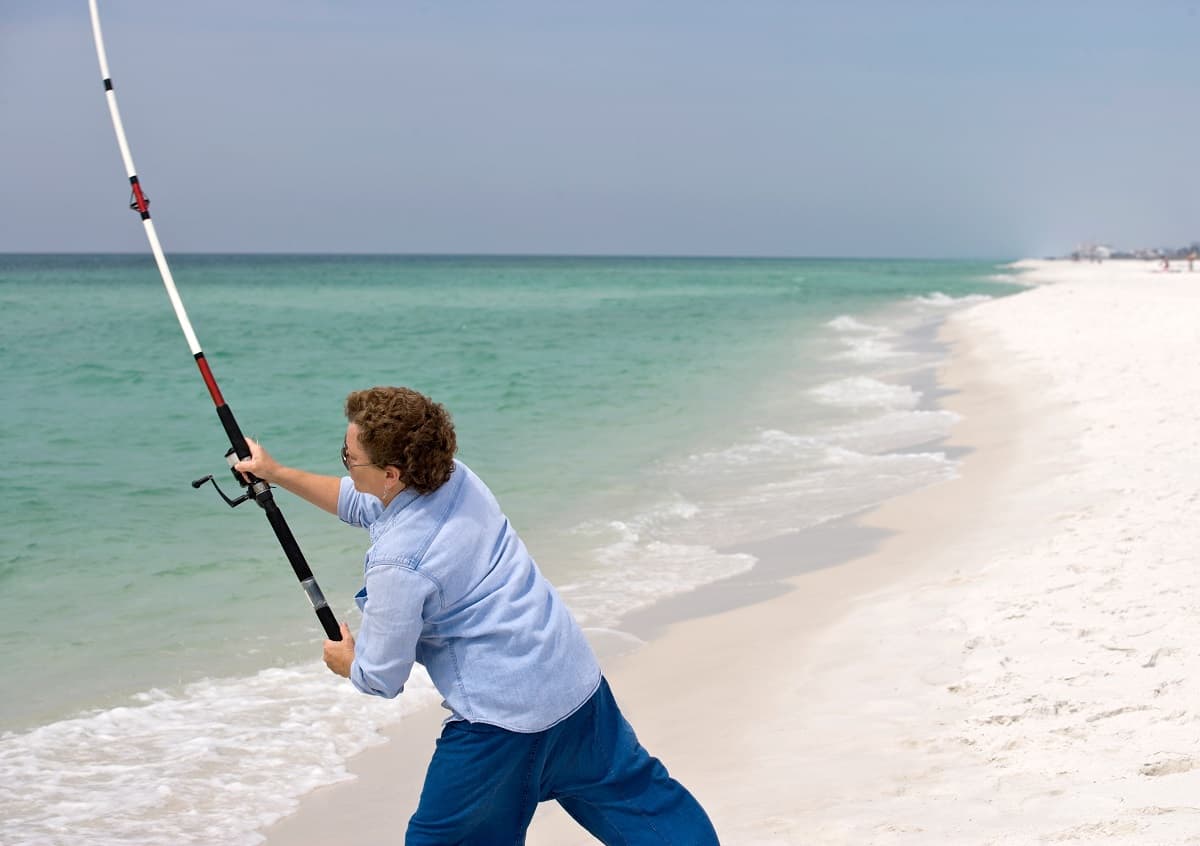
How to Tie a Shock Leader for Surf Fishing
How to Tie a Shock Leader for Surf Fishing
Surf fishing is a sport loved by many, but you need to know how to prepare, tie, and use a shock leader correctly to have a successful experience. This critical skill stops the line from snapping, which is vital to keeping the others around you safe when you are fishing.
When you prepare your shock leader, there are two main things to keep in mind: the shock leader’s length and how to tie it. Here we will take a look at the answer to these crucial questions.
How Long Should the Shock Leader Be?
Your shock leader should be between 25 and 30 feet. The best way to measure this is to double the length of your rod then be able to wrap it around your reel spool six times.
Stopping your line from snapping protects both those around you and your equipment, which is very pricey. This is why you need to know how to tie a shock leader for surf fishing; otherwise, it will not be effective.
While the shock leader’s length is vital, the actual shock leader and how it is tied to your main line are equally as essential.
The Shock Leader Knot
There are plenty of knot options for tying a shock leader, but none is more superior than the Albright Knot. This is because shock leader knots must be as small as possible to ensure that they can pass through the guides without creating issues with your casting distance.
The Albright Knot is known for its small size while being very strong. Here is how to tie it:
- Start with a loop using the heavier line and run roughly 10″ of your lighter line through this loop.
- Next, you need to wrap the lighter line back over itself, and both of the loop sides four times, tightly, moving towards the closed side of the loop where you are holding it. After that, repeat the process running back down over the already-wound line.
- Lastly, you need to feed the tag end through this loop, exiting the loop through the same side that it entered. Then, pull your lighter line to make the knot tiger. Clip the loose ends.
If you are a more visual person or would like to see an Albright Knot being done, take a look at this video: https://www.youtube.com/watch?v=dDKaoCRT2jo
Quick Tips
We have a few simple tips that will help to make the tying process a bit easier:
- To make the knot simpler to tie, dip your lines in water to dampen them. By doing so, all of the strands tie together snuggly and with very little resistance.
- All of the wrapping should be done with your mainline and not your shock leader. As the mainline has a smaller diameter than your shock leader, you need to make your knot as small as possible.
- You need to make your Albright Knot as streamlined as you can, so you can apply a coat of smooth, clear fingernail polish over your knot. Try feathering the polish down the shock leader to assist it in passing through the guides to cast more efficiently.
Keep in mind that the Albright Knot is just one of many knots you can use when tying your shock leader, but it is an excellent place to start. Each surf fisher will have a preferred knot that is best for their style, so don’t be afraid to try out different knots.
When is a Shock Leader Needed?
A shock leader is not always necessary when surf fishing – it is meant to absorb the added stress placed on the line by heavy sinkers when you throw bait. Because of this, you do not need to use a shock leader when you don’t have much weight on the line.
There is a delicate balancing act for using lighter lines and heavier sinkers for surf fishing, so understanding what you need is critical.
For example, if you use a braid for the mainline, a shock lead is not needed as the braid strengthens the mainline. But the low diameter and high breaking strength created by the mainline braid comes with the cost of being somewhat off-balance.
A shock lead is much more cost-effective to use than a braided mainline, which also doesn’t absorb shock very well. So, despite the braid raising your mainline’s breaking strength, the payoff is less than using a shock leader.
Final Thoughts
A shock leader is vital for surf fishing, so ensuring that you know how to tie one will keep yourself, those around you, and your fishing gear safe. You need to make sure your shock leader is strong with a high breaking strength to absorb shock.
Even though you don’t always have to use a shock leader for surf fishing, knowing how to tie one is critical. It is not too hard to learn to do, and you will do it better and faster with practice and experience.
